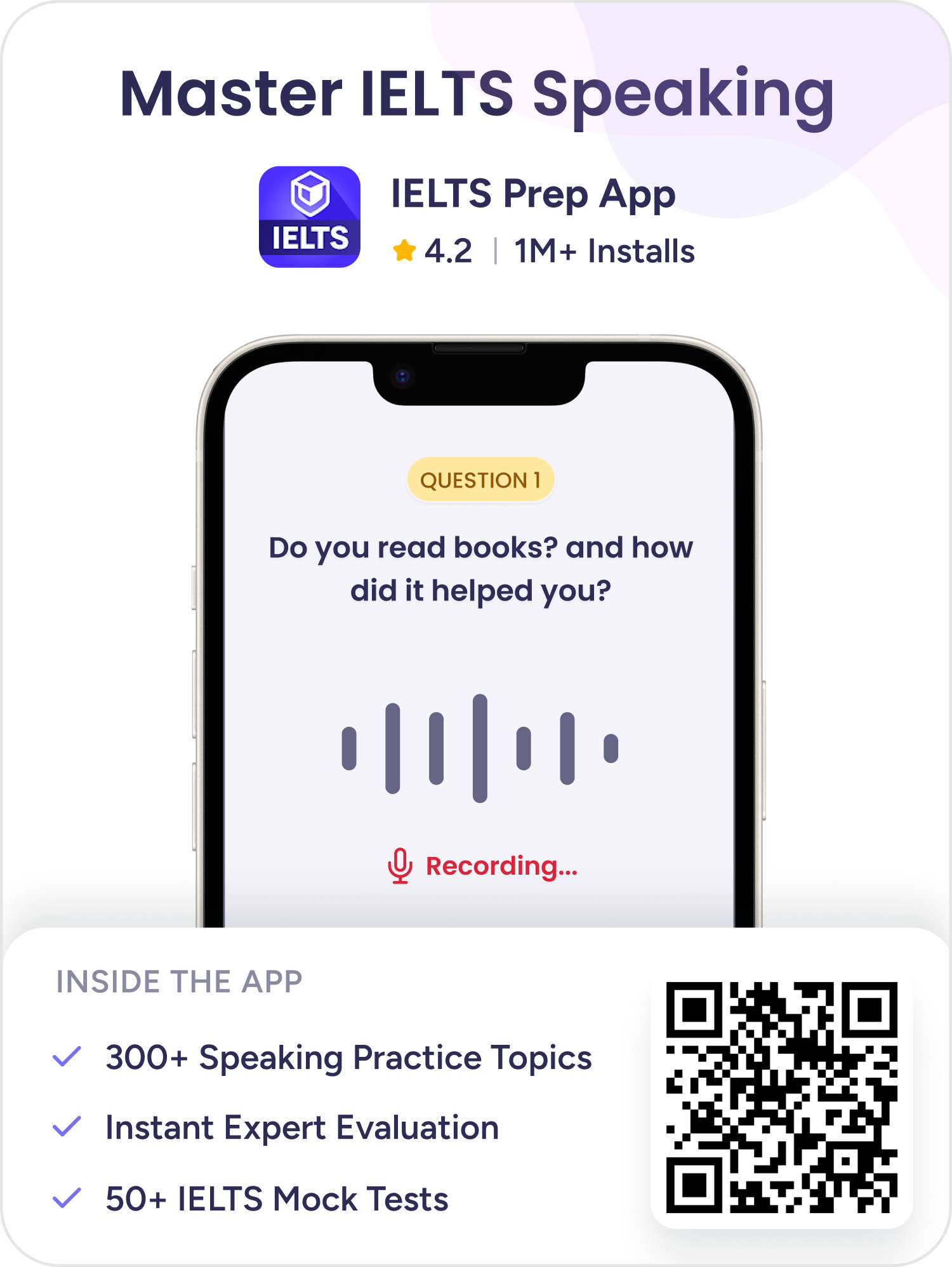Describe A Piece Of Clothing You Wear Most Often: IELTS Speaking Cue Card
You should say
- What is it?
- How often do you wear it?
- What is it like?
- Explain why you enjoy wearing it.
42 unique answers with expert feedback
Band 7
00:00
/
00:00
Follow up questions
Follow up questions
What occasions do you choose different styles of salwar kameez for?
How do you choose the colors and fabrics for your salwar kameez?
What accessories do you think enhance your salwar kameez the most?
Band 7
00:00
/
00:00
Follow up questions
Follow up questions
What other clothing items do you find comfortable?
How do you choose what to wear each day?
Do you have any other sentimental clothing items?
Band 6-7
00:00
/
00:00
Follow up questions
Follow up questions
What other types of clothing do you prefer to wear?
How do you choose what to wear for different occasions?
Have you ever had a favorite piece of clothing that you no longer wear?
Practice other cue cards
Band 6-7
00:00
/
00:00
Follow up questions
Follow up questions
What occasions do you think are best suited for wearing kurtas?
How do you choose the colors and patterns for your kurtas?
Have you ever tried making your own kurtas?
Band 6-7
00:00
/
00:00
Follow up questions
Follow up questions
What occasions do you think are most suitable for wearing traditional clothing?
How do you feel when you wear your traditional attire?
Do you think traditional clothing is still relevant today?
Cue 1:What is it?
- Begin by clearly identifying the piece of clothing you wear most often.
- Mention any specific details that make it unique or special to you.
Example
The piece of clothing I wear most often is my blue denim jeans. They are a classic style that goes well with almost anything, and I love how comfortable they are.
Cue 2:How often do you wear it?
- Explain the frequency of wearing this clothing item, whether it's daily, weekly, or for specific occasions.
- You can also mention any activities or events where you prefer to wear it.
Example
I wear my jeans almost every day, especially when I go to college or hang out with friends. They are my go-to choice for casual outings.
Cue 3:What is it like?
- Describe the material, fit, and style of the clothing item.
- Include any personal touches or modifications you have made to it.
Example
My jeans are made of soft cotton, which makes them very comfortable. They fit me perfectly, not too tight and not too loose, and I love the faded look they have developed over time.
Cue 4:Explain why you enjoy wearing it.
- Share the reasons behind your preference for this clothing item.
- You can mention comfort, style, or any emotional connection you have with it.
Example
I enjoy wearing my jeans because they are incredibly versatile. I can dress them up with a nice shirt for a family gathering or keep it casual with a t-shirt. Plus, they remind me of many fun memories with friends.
Conclusion
Example
In conclusion, my blue denim jeans are more than just a piece of clothing; they represent comfort and style in my daily life. They are a staple in my wardrobe that I truly cherish.
Following this structure will ensure you cover all the essential points while providing a clear and engaging response to the cue card topic.
Tips to answer this Cue Card
1: Being Too Vague
Candidates often give very general answers without specific details about the clothing item. This can make the response less engaging and informative.
Tip
Include specific details about the clothing, such as its color, style, and any unique features to make your answer more vivid.
2: Neglecting Personal Connection
Some candidates fail to explain why they enjoy wearing the clothing, missing an opportunity to connect personally with the topic.
Tip
Share personal stories or feelings related to the clothing to highlight its significance in your life.
Ignoring the Cues
Candidates sometimes overlook the specific cues provided, which can lead to incomplete answers that do not fully address the prompt.
Tip
Make sure to answer all the cues clearly, ensuring you cover what the clothing is, how often you wear it, its characteristics, and your enjoyment of it.
IELTS Cue Cards asked last week
Reported by Leap students who gave IELTS
All Answers
Here are all the answers by real-users practicing speaking for IELTS Cue Cards on our IELTS Prep App.
Band 7
Band 7
Band 6-7
Band 6-7
Band 6-7
Band 6-7
Band 6-7
Band 6-7
Band 6-7
Band 6-7

Explore
473 Cue Cards

Personal Experience
121 Cue Cards

Describing People
66 Cue Cards

Travel
47 Cue Cards

Personal Development
45 Cue Cards

Hobbies/Interests
44 Cue Cards
Environment/Culture
39 Cue Cards

Tech/Media
27 Cue Cards

Education/Work
19 Cue Cards

Social Issues
19 Cue Cards

Describe An Object
16 Cue Cards
Business/Shopping
16 Cue Cards

Food/Cooking
8 Cue Cards
Fashion
6 Cue Cards
Get the IELTS Prep App
4.2
1M+ Installs
Get the IELTS Prep App
4.2
1M+ Installs
Get the app link on your phone
Or download app from





